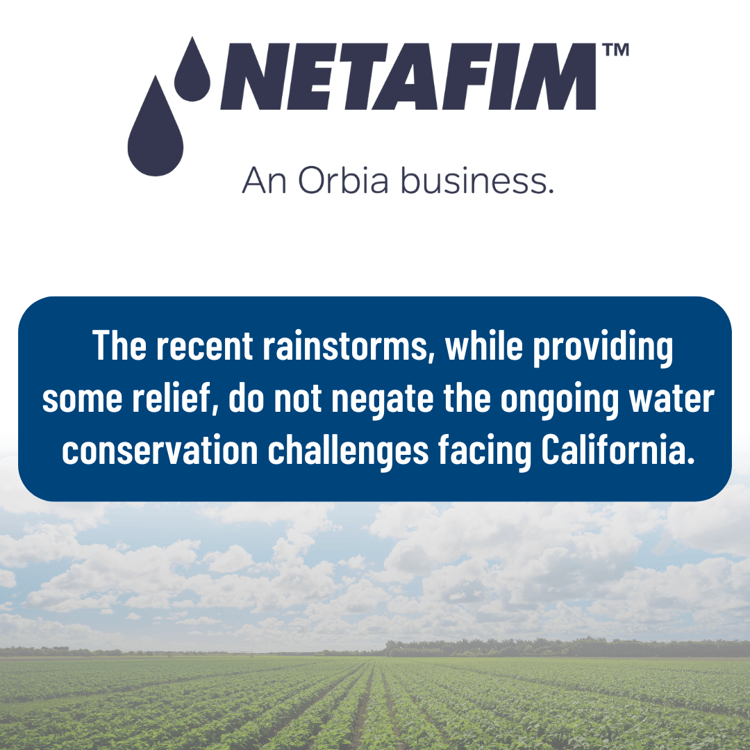From the Field: How California's January Rainfall Surge Impacts Agriculture
The recent rainfall in California had a devastating impact across the state, notably on the state’s agriculture industry. In a matter of days, the state received almost a year's worth of rainfall, causing the flooding of fields and impacting the livelihoods of many growers. But the effects go beyond the fields. Here is how the surge has impacted nearly everyone, from growers to consumers.
Challenges for Growers in California
Flooding and soil erosion have damaged crops and farmlands across the state, resulting in crop losses and extra expenses for farmers. The rain caused the shuffling of topsoil, which leads to an uneven distribution of organic matter that makes it difficult for some crops to grow. This has resulted in farmers needing to undertake additional and unexpected measures, such as soil rebalancing. While some crops are unaffected, growers still face the expense of cleaning up the extra soil that moved during the storms, along with any fixing other damage done to their fields, machinery, and other tools.
While the heaviest storms this season have passed, the rain season in California is not over. Many acres are still drying. In order for more crops to be planted, the soil must absorb the excess rainfall. This absorption may take several weeks which impacts planting dates and styles.
Flooding and heavy rain can also promote pathogen growth and movement. The high humidity and warm soil temperatures caused by heavy rainfall create the ideal conditions for the spread of diseases among crops. For organic fields, this will mean extra testing and time to make sure the soil is clear of any pathogens before planting.
This all means reduced acres and inaccessible fields, affecting the livelihoods of farm workers who may be temporarily out of work until their fields are restored to a usable state.
Effects of Heavy Rainfall on Consumer Prices and Availability
The effects of the rain go beyond the field. The rain has led to a decline in production, and higher prices for consumers. For example, farmers in Salinas Valley have resorted to manual planting, a more time-intensive process that limits yields and results in higher prices for crops such as broccoli and lettuce. Similarly, in the Central Valley, long-term crops have been thrown off schedule, and increased production costs will be passed on to consumers.
Despite Recent Rainfall, the Drought is not Over
Despite popular belief, California is currently experiencing one of the worst droughts in its history and the rain is not an indicator that it is over. The recent rainstorms, while providing some relief, do not negate the ongoing water conservation challenges facing the state.

Despite a robust infrastructure for capturing and storing rainfall, data from the Bureau of Reclamation showed that 95% of stormwater inflows into the San Joaquin Delta were released into the ocean. These rains were a missed opportunity to capture water. It is particularly frustrating for farmers in California, as it means missing out on a valuable resource for future crop growth. It also serves as a reminder of the need to take proactive measures to mitigate the effects of weather fluctuations and the ongoing need to address water scarcity, as well as address storage issues to take better advantage of the next rainstorm.
As we all look ahead, it is crucial that our attention be directed toward addressing these challenges. The state and all stakeholders must continue to address the industry’s ongoing challenges by implementing policies that effectively support growers and protect water, agriculture’s most important resource.



Comments
We'd love to hear your thoughts! To enter a comment, type your name and email address.